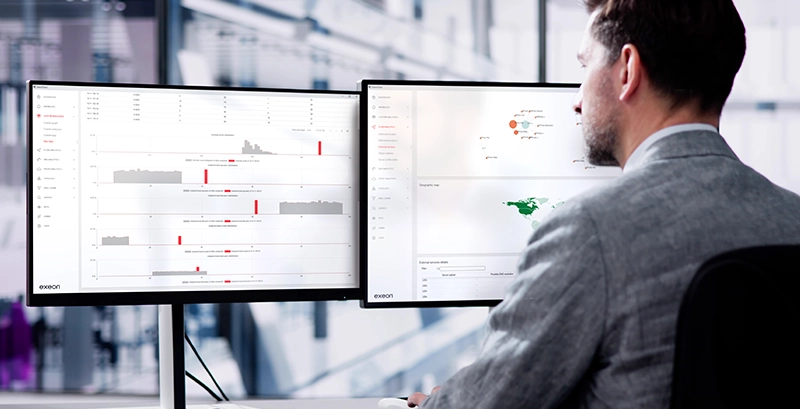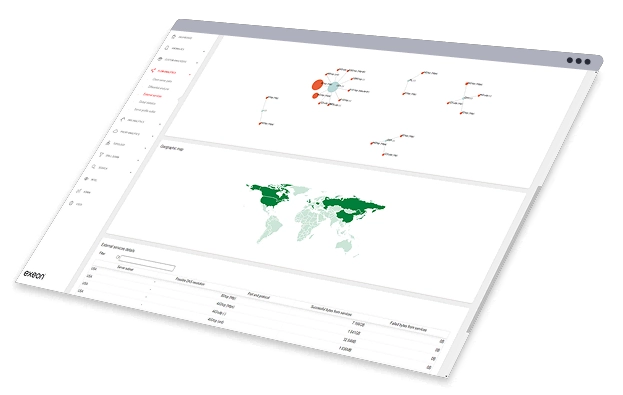Why Tool Sprawl Weakens IoT Attack Detection – and How Integrated Solutions Build Cyber Resilience
The Global Industrial Cybersecurity Benchmark 2025, published by Takepoint Research in July 2025, revealed a striking paradox: while many industrial organizations claim strong real-time transparency, most admit they cannot reliably detect OT and IoT threats. At the same time, most rely on a patchwork of three or more monitoring tools, which creates blind spots, inconsistent insights, rising costs, and little real resilience.
For operators of critical infrastructure (KRITIS) and industrial enterprises worldwide, this is not merely a compliance matter but a structural weakness in how attack detection is conceived and implemented.
Too Many Tools, Too Little Clarity
The prevalence of tool sprawl deserves particular attention. Instead of improving visibility, the proliferation of monitoring solutions often produces the opposite:
- Overlaps and gaps that leave IT, OT, IoT, and cloud environments disconnected.
- Alert fatigue, as SOC teams manage redundant or conflicting signals.
- Escalating costs, with little added resilience.
This is not a regional problem. From Europe to North America, the Middle East, and Asia, enterprises are layering tools in search of coverage — but ending up with fragmentation instead of security.
Why Attack Detection in IoT and OT is Harder
Industrial and IoT environments bring unique technical hurdles:
- Encrypted traffic: Deep Packet Inspection (DPI) is increasingly blind as more traffic shifts to TLS/SSL.
- Agent limitations: Unlike IT endpoints, most OT and IoT devices cannot support agents.
- Manual processes: According to the study, one-third of companies need 90+ days to remediate threats.
- Compliance requirements: Regulators in different regions (e.g., Systeme zur Angriffserkennung (SzA) in Germany, NIS2 in the EU, NERC CIP in North America) demand reliable, auditable detection systems.

The common denominator:
Fragmented approaches and legacy controls leave critical environments exposed.
Principles for Effective Detection Architectures
The study reinforces several design imperatives for modern attack detection:
- Holistic visibility across IT, OT, IoT, and cloud — no blind spots.
- Metadata-driven analysis is resilient to encryption and scalable in high-throughput environments.
- Behavioral analytics (UEBA) — spotting anomalies across users, devices, and applications.
- SOC integration — enhancing SIEM/SOAR workflows, not adding silos.
- Audit-ready reporting — supporting NIS2, DORA, GDPR, and sectoral mandates globally.
These architectural principles, not product checkboxes, define where innovation must occur.
Innovation in Practice: Metadata and Behavior Analytics
This is where approaches like Network Detection and Response (NDR) and User and Entity Behavior Analytics (UEBA) are proving their worth:
- NDR based on metadata allows traffic analysis without costly sensors or packet payload inspection. This is especially relevant for encrypted, agent-limited OT and IoT networks.
- UEBA provides visibility into insider misuse, compromised accounts, and abnormal user or device behavior — crucial for environments where traditional signatures fall short.
- Integration-first design reduces tool sprawl by enriching existing SOC workflows instead of duplicating them.

At Exeon, we focus on Exeon.NDR for metadata-based network visibility and Exeon.UEBA as a complement for user behavior insights. Together, they help critical infrastructure operators move from fragmented monitoring to integrated visibility and detection.
Modern attacks across IT, OT, IoT, and cloud — only an integrated architecture can reveal them early
Providers such as AWS and Azure already deliver robust native services. Yet for industrial and critical infrastructure operators, relying on these alone is insufficient:
- They focus primarily on cloud-native workloads (VMs, storage, APIs).
- East–west traffic within corporate or OT networks remains invisible.
- Correlation across environments (on-prem, OT, IoT, cloud) is limited.
Cloud-native controls are valuable building blocks, but must be complemented by integrated detection that spans the entire environment. This is where Exeon adds value:
- Metadata-based NDR ingests network flow records, AWS VPC Flow Logs, and Azure NSG data, providing a unified view across IT, OT, and cloud.
- Sensorless monitoring means even encrypted OT/IoT traffic is visible — where agents and DPI fail.
- Correlation and reporting enable compliance-ready insights across hybrid environments, from NIS2 in Europe to NERC CIP in North America.
Example:
Consider ransomware that begins in an IoT device, spreads laterally through an OT network, and only later compromises workloads in AWS or Azure.
- AWS GuardDuty would flag unusual behavior once inside AWS.
- Azure Defender for Cloud would do the same inside Azure.
- But the early propagation in OT networks would remain unseen.

With Exeon.NDR, the lateral movement can be detected at the OT stage, enriched with metadata from AWS and Azure, and presented as a single integrated incident. SOC teams can contain the attack earlier and respond with context across environments.
Outlook: Beyond Compliance Toward Resilience
Whether referred to as SzA in Germany, NIS2 requirements in Europe, the Swiss ordinance on the protection of critical infrastructures, or sector-specific mandates elsewhere, the message is the same worldwide:
Critical infrastructure must operate with reliable, integrated, and explainable detection systems.
The real goal is not simply to pass an audit, but to build resilience:
- Detect abnormal behavior across IT/OT/IoT.
- Correlate signals across environments, including cloud.
- Respond in days, not months.
The Takepoint Research study reminds us that the number of tools used does not define security maturity. It is determined by how effectively organizations can detect, understand, and respond to threats before they disrupt operations.
Conclusion
Industrial and critical infrastructure organizations face a rising tide of cyber risk, amplified by geopolitical tensions, digital transformation, and IoT proliferation. Fragmented tools will not solve this problem.
The way forward is architectural clarity: metadata-based visibility, behavioral detection, and integration into existing SOC workflows. Only then can organizations close the detection gap — and move from regulatory compliance to true cyber resilience.


